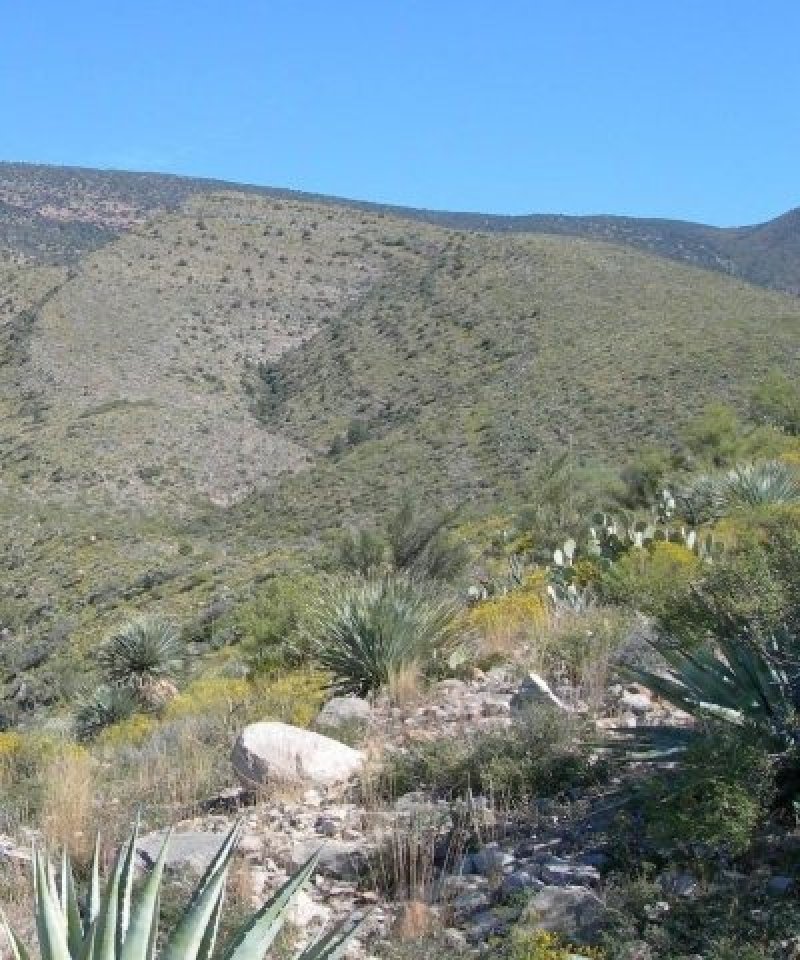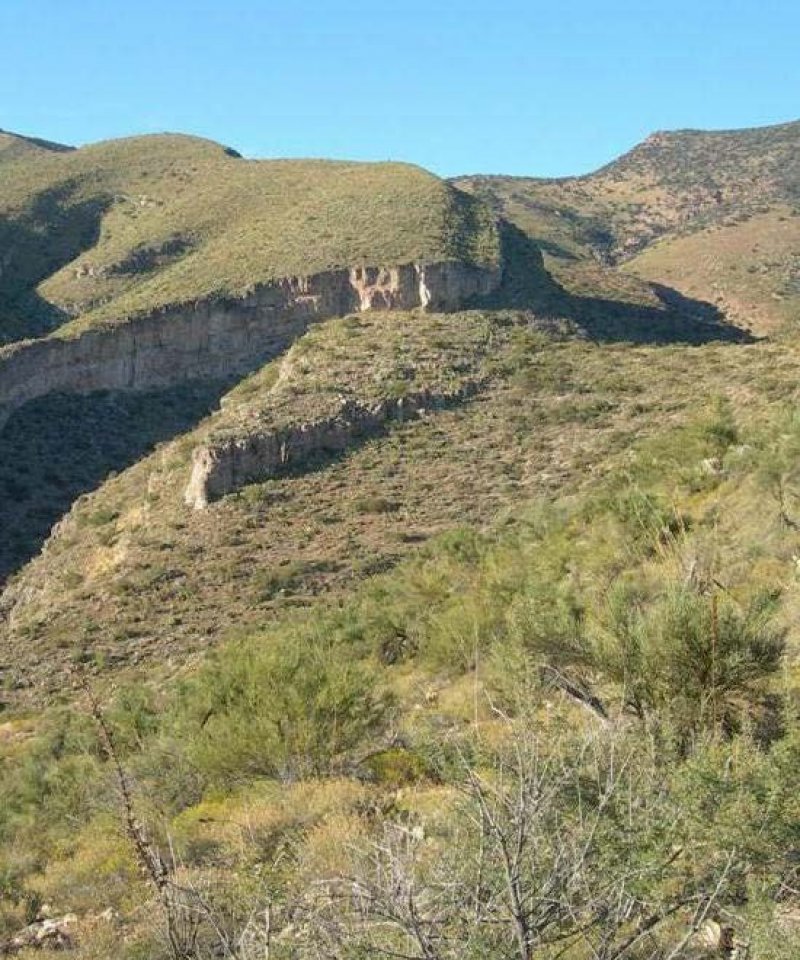Limestone Hills 12-16" p.z.
Scenario model
Current ecosystem state
Select a state
Management practices/drivers
Select a transition or restoration pathway
- Transition 1a More details
- Transition 2a More details
- Restoration pathway 1b More details
- Restoration pathway 2b More details
-
No transition or restoration pathway between the selected states has been described
Target ecosystem state
Select a state
Description
The historic native plant community is a diverse mixture of perennial grasses, suffrutescent forbs, shrubs, succulents and desert trees. A rich flora of native annual forbs and grasses, of both the winter and summer seasons, exist in the plant community. Periodic, naturally occurring, wildfires were important in maintaining the potential plant community.
North slopes have a chaparral of evergreen shrubs like jojoba, turbinella oak, mountain mahogany, cliffrose, desert buckbrush and canotia. Southern exposures will have a higher percentage of desert shrubs, trees like paloverde and succulents in the plant community. More xeric grasses will dominate southern exposures (aristida, tridens). Grasses on cooler aspects include stipa species and sideoats grama.
Submodel
Description
Perennial grass canopy cover is reduced due to the interactions of drought, grazing and fire. Desert shrubs and cacti dominate the plant community. Shrub cover exceeds 30%. Annuals, both native and non-native, dominate the under-story. Fire frequency is reduced but the site can still burn, especially after "El Nino" years produce heavy fuel loads of annual grasses and forbs.
Submodel
Description
Shrubs like jojoba, whitethorn acacia, mesquite, ocotillo and canotia, and succulents like prickly pear, cholla and banana yucca can increase to dominate the site in the absence of fire for very long periord of time. Native and non-native annual forbs and grasses dominate the under-story. In "El Nino" years, herbaceous fuels can be sufficient to carry fire through the heavy canopy of shrubs. The major woody shrubs are, however, fire resistant once established. Such fires would remove less tolerant species like cacti and leave intact the sprouting woody plants to become more and more dominant. Extreme rainfall events coupled with the fire, drought and grazing interaction, can lead to rilling of steep slopes. Compaction of soils can occur with heavy trailing from continuous livestock use. Loss of plant cover after repeated fire can lead to accelerated rill erosion under these circumstances.
Submodel
Description
Non-native annual grasses and forbs like red brome, cheatgrass, and wild oats can invade and dominate areas of the site. These species can, over time, reduce the seed-bank of native annual grasses and forbs. Their presence can increase the fire frequency (of man made fires) especially where roads and urban areas are adjacent to areas of the site. Repeated fires tend to remove fire sensitive species like paloverde, cacti and canotia, and leave fire tolerant species like turbinella oak, mesquite, whitethorn and jojoba.
Submodel
Mechanism
Lack of fire for long periods, continuous heavy grazing and drought that reduced fuel loads.
Mechanism
Introduction of seed source of exotic annuals like red brome and wild oats plus increased fire frequency (every 5 to 10 years).
Mechanism
Unknown, possible herbicide followed by prescribed fire as maintenance.
Model keys
Briefcase
Add ecological sites and Major Land Resource Areas to your briefcase by clicking on the briefcase (![]() ) icon wherever it occurs. Drag and drop items to reorder. Cookies are used to store briefcase items between browsing sessions. Because of this, the number of items that can be added to your briefcase is limited, and briefcase items added on one device and browser cannot be accessed from another device or browser. Users who do not wish to place cookies on their devices should not use the briefcase tool. Briefcase cookies serve no other purpose than described here and are deleted whenever browsing history is cleared.
) icon wherever it occurs. Drag and drop items to reorder. Cookies are used to store briefcase items between browsing sessions. Because of this, the number of items that can be added to your briefcase is limited, and briefcase items added on one device and browser cannot be accessed from another device or browser. Users who do not wish to place cookies on their devices should not use the briefcase tool. Briefcase cookies serve no other purpose than described here and are deleted whenever browsing history is cleared.
Ecological sites
Major Land Resource Areas
The Ecosystem Dynamics Interpretive Tool is an information system framework developed by the USDA-ARS Jornada Experimental Range, USDA Natural Resources Conservation Service, and New Mexico State University.



